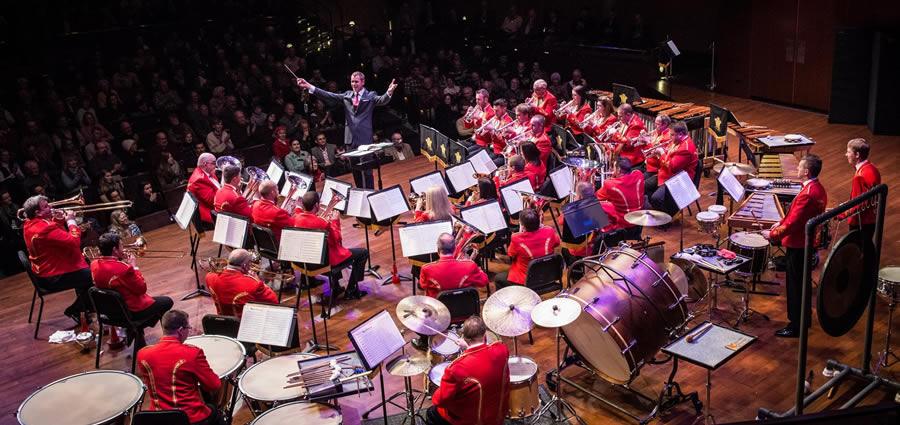The KAIA String Quartet is known for its ability to “beautifully blur the lines between jazz, classical, Latin and world music.” However, the ensemble, appearing on the Music for a Great Space series in the Greenhill Art Gallery in the Cultural Arts Center Saturday night, began its program with one of the greatest compositions in the European classical repertoire: String Quartet No. 15 in A minor, Op. 132, by Ludwig van Beethoven (Germany, 1770-1827).
As violist Amanda Grimm explained to the large audience, Beethoven wrote a total of sixteen string quartets. The last six, written late in his life, are considered to be among the best compositions of all time. The quartet in A minor was written in 1825, when the composer was in failing health. A short respite from his suffering led to his titling the third movement “Holy song of thanks (‘Heiliger Dankgesang’) to the divinity, from one made well.”
Musicians approach the music from Beethoven’s late style period with the utmost respect, and, one suspects, with some trepidation. This is not easy music: the composer demands much from the performers as well as the listeners. The KAIA String Quartet launched into the first movement, which is distinguished by contrast and conflict, with authority and passion.
The second movement (a “minuet”) contains a trio section featuring the 1st violin playing in the stratosphere over a drone from the other instruments. The third movement, the longest of the five, is surely one of Beethoven’s most profound utterances, beginning with imitative lines spun through the four instruments before the “hymn of thanks” is heard. A wildly contrasting section interrupts the hymn twice in the course of the movement.
The fourth movement, a two-minute march, launches into the Allegro finale, a movement that ends somewhat optimistically, in the major mode.
Each player ‒ Victoria Moreira and Naomi Culp, violins, violist Grimm, and Hope DeCelle, cello ‒ was called upon to present important material in several guises – as soloist, coupled with another player, or with the other three playing in unison. Throughout the 40-minute performance, the musicians brought the bold contrast of characters to the fore, exploiting the wide range of dynamics, bringing certain passages into bold relief. It seemed obvious that this is a quartet that plays together frequently: ensemble was terrific.
The second half of the concert featured music from South America: Tres movimientos porteños, para cuarteto de cuerdas, sobre ritmos de Tango (Three Buenos Aires movements, for string quartet, about Tango rhythms) by José Bragato (Argentina, 1915-2017) and two pieces by Astor Piazzolla (Argentina, 1921-1992). As Moreira explained, Bragato was a compatriot and cellist in Piazzolla’s band.
The first of Bragato’s Movements (Popular) begins with extroverted tango rhythms, fervently played by all four string players; a more wistful middle section contrast. The second “Romántico” movement put the strong playing of cellist DeCelle center stage. Jazzy harmonies and the humorous ending made this a winner. The final “Culto” (Worship), gave further credence to the statement that the ensemble “blurs the lines,” with hints of European classical and New World popular music infused with tons of rhythmic action.
Two of the Four Seasons (Cuatro Estaciones Porteñas) of Piazzolla, “Otoño Porteño” (Buenos Aires Autumn) and “Primavera Porteña” (Buenos Aires Spring), concluded the written portion of the program. These two arrangements by Geraldo Moreira were packed full of Argentinian rhythms and folk-influenced tunes, delighting the crowd.
“Escualo” (The Shark) also by Piazzolla served as the encore. Lively rhythms, syncopation, glissandos, and palpable energy made the work a showstopper.
Every season, Music for a Great Space presents a “Music for a Great Cause,” donating 50% of the concert’s proceeds to a different non-profit organization. Saturday night’s partner was The Arc of Greensboro, which supports people with intellectual and developmental disabilities and their families.
Note: The writer is a former president and board member of Music for a Great Space.











